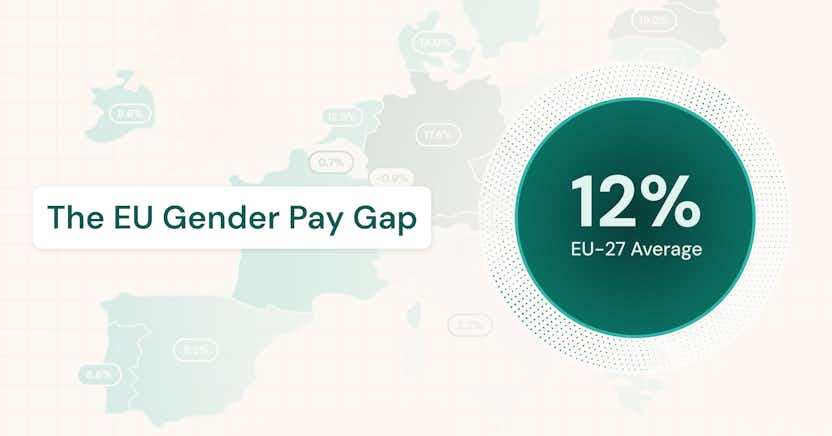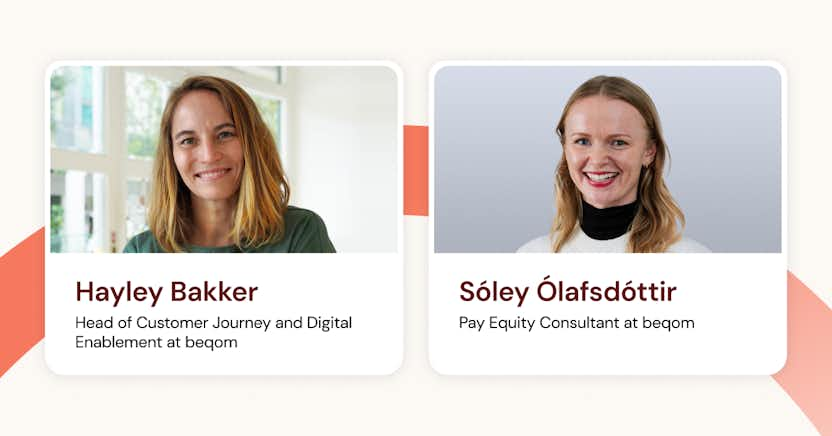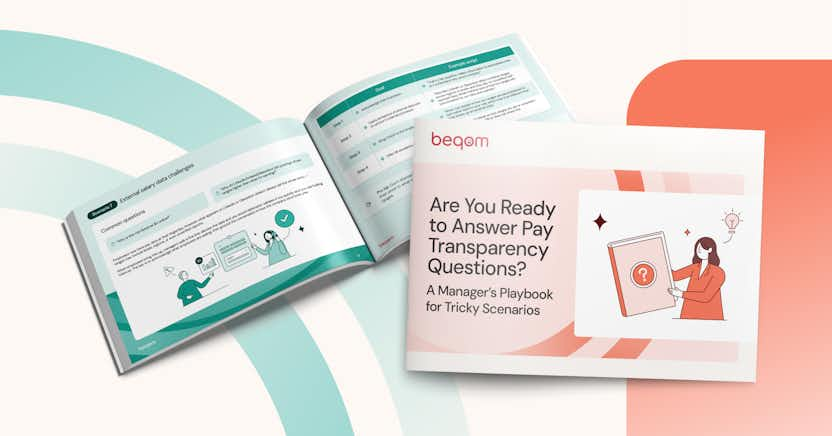What Is Compensation Management Software?
Compensation management software is a specialized technology solution designed to help organizations plan, manage, and optimize employee compensation, including salaries, bonuses, incentives, and equity-based rewards. It provides a structured and automated approach to compensation planning, ensuring that pay structures align with business objectives, market trends, and regulatory requirements.
Unlike general HR suite compensation modules, which are designed primarily for the basic salary and bonus administration needs of small to medium businesses, dedicated compensation management software is built to accommodate more complex pay structures, variable compensation models, and pay equity analysis, such as needed by large and/or global enterprises. It provides HR and compensation teams with advanced tools to streamline compensation cycles, enhance pay transparency, ensure compliance, and support data-driven decision-making.
Organizations use compensation management software to reduce administrative burden, improve accuracy, and enhance employee engagement by ensuring fair and performance-driven pay structures. The software integrates with existing HR, payroll, and finance systems to provide a seamless compensation management experience.
What are the key features of compensation management software?
Compensation management software typically offers a wide range of features designed to automate and enhance compensation processes. Some of the core features generally include:
Compensation planning and budgeting
- Enables HR teams to define salary budgets based on business objectives and financial constraints.
- Supports scenario modeling to forecast the impact of different compensation strategies.
- Ensures alignment between compensation plans and corporate financial goals.
Salary and pay structure management
- Creates and manages salary bands, pay grades, and job-based compensation structures.
- Ensures internal pay equity by providing visibility into pay scales and benchmarking data.
- Allows for automated salary adjustments based on tenure, performance, and market trends.
Variable pay and incentive management
- Supports bonus planning, commission structures, and sales incentives.
- Links performance metrics to compensation outcomes, ensuring alignment with business goals.
- Automates short-term and long-term incentive programs, such as stock options and profit-sharing.
Pay equity analysis and compliance
- Conducts real-time pay equity audits to identify disparities and ensure fair compensation practices.
- Provides automated compliance tracking for evolving pay transparency and labor laws.
- Generates regulatory reports and audit trails to support compliance initiatives.
Compensation analytics and reporting
- Offers data visualization and dashboards to track compensation trends.
- Provides real-time insights on compensation spend, pay gaps, and workforce cost trends.
- Supports custom report generation for boardroom-ready presentations.
Integration with HR, payroll, and finance systems
- Syncs with HRIS, payroll software, and financial planning tools to ensure accurate data flow.
- Eliminates manual data entry and reduces errors in salary calculations.
- Provides a single source of truth for compensation data, enhancing decision-making.
Why do organizations need compensation management software?
Many organizations struggle with compensation management due to manual processes, lack of transparency, compliance risks, and data inaccuracy. Compensation management software addresses these challenges by:
- Improving efficiency – Automates salary planning, incentive payouts, and pay adjustments, reducing HR workload.
- Enhancing accuracy – Eliminates manual errors in compensation calculations.
- Ensuring compliance – Keeps organizations aligned with global pay transparency and labor laws.
- Supporting strategic decision-making – Provides data-driven insights for competitive compensation strategies.
- Boosting employee trust and retention – Ensures fair and transparent pay practices, improving job satisfaction.
How does compensation management software compare to other approaches?
Organizations manage compensation using different methods, but not all approaches are equally effective. Below is a comparison of compensation management software with other common approaches:
Spreadsheets
- Pros: Low cost, customizable, familiar interface.
- Cons: Prone to errors, lacks automation, security risks, difficult to scale.
Best for: Small businesses with simple pay structures
HR suite compensation modules
- Pros: Integrated with broader HR functions, offers basic automation.
- Cons: One-size-fits-all, lacks flexibility for complex compensation structures, requires workarounds for compliance.
Best for: Organizations with simple pay structures and minimal need for customization
Dedicated compensation management software
- Pros: Purpose-built for compensation, highly flexible, supports advanced analytics and compliance.
- Cons: Requires investment in setup and integration.
Best for: Enterprises with complex, global, or performance-driven compensation needs
How can you evaluate compensation management software vendors?
Selecting the right compensation management software is not just about the technology—it’s also about the vendor behind the solution. A strong, reliable vendor ensures ongoing innovation, compliance updates, and customer support, which are critical for long-term success. When assessing potential vendors, organizations should consider the following factors.
Does the vendor have relevant industry expertise and a proven track record?
A vendor’s experience in the compensation management space can be a strong indicator of its ability to support complex pay structures and evolving compliance needs. Consider:
- How long the vendor has been in the compensation management market.
- Whether they specialize in compensation solutions or if compensation is just a small part of a broader HR offering.
- What industries they serve and whether they have experience with organizations of similar size and complexity.
- Whether they provide case studies or references from companies with similar compensation challenges.
Vendors that focus specifically on compensation management are more likely to provide deep expertise, robust features, and continuous innovation compared to general HR suite providers.
How committed is the vendor to innovation and product development?
Compensation management is evolving rapidly, especially with advancements in AI, analytics, and compliance automation. Software providers should invest in R&D and be committed to continuous improvement. Organizations should assess:
- How frequently the vendor releases new features and updates.
- Whether they invest in AI-driven analytics, automation, and pay equity tools.
- Whether they proactively update the software to reflect changes in labor laws and compliance requirements.
Choosing a vendor that is forward-thinking and responsive to industry trends ensures that the software remains relevant and effective as compensation practices evolve.
What level of customer support and service quality can you expect?
Compensation is a high-stakes function—errors or disruptions in pay processes can have serious consequences. Reliable customer support is essential to ensure smooth implementation and ongoing operations. Organizations should evaluate:
- The availability and responsiveness of customer support, whether 24/7, regional, or business hours only.
- Whether they offer dedicated account managers or rely solely on ticket-based support.
- The quality of their implementation support and training resources for HR teams.
- Their track record in customer satisfaction based on reviews, testimonials, or third-party ratings.
A vendor with strong customer support helps organizations avoid costly downtime and ensures HR teams can maximize the software’s capabilities.
Can the solution scale globally and support complex organizational structures?
For organizations with a growing workforce or global operations, compensation software should be able to scale accordingly. Consider whether the vendor offers:
- Multi-country and multi-currency support for global compensation structures.
- Compliance tracking for regional pay transparency and tax laws.
- A scalable architecture that can handle expanding workforce needs without performance .issues
Selecting a vendor with proven success in managing large-scale, complex compensation programs ensures the software will continue to meet business needs as the organization grows.
How does the vendor handle security, compliance, and data privacy?
Given that compensation data is highly sensitive, organizations must ensure the vendor adheres to industry-leading security and compliance standards. Evaluate:
- What data encryption and access controls are in place to prevent breaches.
- Whether the vendor complies with GDPR, SOC 2, ISO 27001, or other relevant security standards.
- Whether the system can handle compliance reporting and audit trails for regulatory requirements.
A vendor with robust security measures and compliance certifications minimizes risk and ensures that compensation data remains protected.
Does the software integrate well with your existing HR, payroll, and finance systems?
Even the best compensation software will underperform if it doesn’t integrate well with HR, payroll, and finance systems. Organizations should assess:
- Whether the vendor offers integration with major HRIS and payroll providers.
- Whether the system manages all of your compensation data in one centralized location.
- How the vendor handles data migration from existing compensation tools.
A vendor with strong integration capabilities ensures a seamless transition and smooth data flow, reducing administrative workload and improving accuracy.
What is the vendor’s reputation among customers and industry experts?
Researching the vendor’s reputation can provide valuable insights into real-world user experiences. Organizations should:
- Check independent software review platforms such as Gartner, G2, or Capterra for customer ratings and feedback.
- Look for success stories and testimonials from companies with similar compensation needs.
- Assess whether the vendor has received industry awards or recognitions for innovation and customer satisfaction.
A vendor with high customer satisfaction and strong industry recognition is more likely to deliver a reliable and well-supported compensation solution.
Final thoughts on evaluating the vendor
Selecting compensation management software is a long-term investment, and the vendor's expertise, reliability, and commitment to innovation are just as important as the features of the software itself. By conducting thorough due diligence, organizations can choose a vendor that provides not only the right technology but also the support, security, and scalability needed for sustained success.
What are best practices for implementing compensation management software?
Organizations looking to implement compensation management software should follow best practices to ensure a smooth transition and maximize its benefits:
- Define compensation objectives – Establish clear goals for how the software will support compensation strategy and business needs.
- Conduct a gap analysis – Identify limitations in current compensation processes and determine key requirements for the new system.
- Select a solution that meets business needs – Choose software that aligns with company size, compensation complexity, and regulatory requirements.
- Ensure seamless integration – Connect the software with existing HR, payroll, and financial systems to ensure smooth data flow.
- Train HR and managers – Educate key stakeholders on using the system for compensation planning, pay adjustments, and reporting.
- Monitor and refine compensation strategies – Use analytics to continuously optimize pay structures and incentive plans.
Frequently asked questions (FAQs) about compensation management software
- What types of organizations benefit most from compensation management software?
Large enterprises, global organizations, and companies with complex pay structures benefit most from compensation management software. Businesses that need to manage diverse compensation plans, ensure compliance with evolving pay regulations, or align pay with performance will find the software especially valuable. - How does compensation management software improve pay equity compliance?
Compensation management software includes pay equity analysis tools that automatically compare salaries across demographics, identify pay gaps, and generate compliance reports. This ensures organizations can proactively address disparities and align with global pay transparency laws. - How does compensation management software integrate with other HR and payroll systems?
Most compensation management software integrates seamlessly with HRIS, payroll software, and financial planning tools. It syncs employee data, salary structures, and compensation changes to ensure accuracy in payroll processing and financial reporting. - What challenges does compensation management software solve?
The software addresses challenges such as manual errors, lack of pay transparency, inconsistent compensation structures, compliance risks, and administrative inefficiencies. By automating compensation planning and execution, it ensures fair, accurate, and efficient compensation management. - How does compensation management software support strategic decision-making?
By providing real-time compensation analytics, benchmarking data, and scenario modeling, the software helps HR and business leaders make informed pay decisions. It allows organizations to evaluate the impact of different compensation strategies before implementation. - Is compensation management software expensive?
The cost of compensation management software varies depending on features, company size, and integration requirements. While there is an initial investment, the long-term benefits—such as improved efficiency, compliance, and workforce retention—typically outweigh the costs. - Can compensation management software handle global compensation structures?
Yes, most dedicated compensation management software solutions are designed to support multi-currency, multi-country pay structures, ensuring compliance with regional labor laws and tax regulations. The more robust the solution, the better it is at handling complexity, including local differences and exceptions.
Conclusion
Compensation management software is an essential tool for organizations looking to streamline compensation planning, enhance pay transparency, ensure compliance, and align pay structures with business goals. Unlike spreadsheets or HR suite compensation modules, dedicated compensation software provides the flexibility, automation, and analytics capabilities required for modern compensation strategies.
As businesses grow and compensation structures become more complex, adopting a purpose-built compensation management solution ensures greater efficiency, accuracy, and strategic decision-making, helping organizations attract, retain, and motivate top talent.






